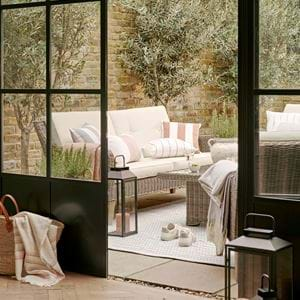Why meadows matter
Why meadows matter
Nodding blue harebells, white pillows of ransom, a sea of pink thrift and flashes of bird’s-foot-trefoil. British wildflowers are an exotic bunch. Richly hued foliage, bold splashes of colour, delicate pin cushion flowers and a generous aptitude to grow on the most challenging of sites. Yet look around our landscapes and you’d be hard pressed to find them. With 70% of our land now farmed with genetically uniform crops, and our desire for manicured gardens and tightly cropped lawns, we’ve effectively lost 97% of our natural wildflower meadows and grassland, and with that, the habitats to protect and preserve our wildlife.
Putting a ring fence around these last nature reserves goes back to the early conservation movement in the 1970s. But as wild seed pioneer Donald Macintyre points out, ‘It’s not enough. We need to repair, restore and put back.’ And that’s exactly what he set out to do, establishing Emorsgate Seeds in 1980 after studying botany, genetics and plant breeding. The aim was to promote the use of wild plant seeds, and Emorsgate is now one of the leading suppliers of British wildflowers, growing, harvesting by hand, and distributing over 300 species to help propagate a more biodiverse landscape.
What can we do to avoid a silent spring? There are 42,865 local wildlife sites in England, ranging from large commons to tiny treasures, such as an old tennis court at Gresham’s School in Norfolk that boasts more than 200 orchid spikes. The preservation of these flowery havens was established in the 70s, although they were as marginalised as the early conservationists. Now, rewilding, biodiversity and preservation are hot topics. As Donald puts it, ‘A little bit of raggedness is acceptable now.’ These days, the Chelsea Flower Show showcases perennial spring meadows and wildlife haven retreats. Councils are planting up motorway verges with poppies, cornflowers and yellow clusters of kidney vetch – the only wildflower where the ‘small blue’, Britain’s smallest butterfly, will lay its eggs. Urban landscapes are turning green as guerrilla gardening projects flaunt a new, wilder shagginess.
Much restoration will depend on the availability of wildflower seed and the detailed knowledge required for successful aftercare. Each seed carries the locked-in potential to transform a landscape, to create complex plant communities rich in diversity and full of beauty and colour. A sea of ragwort, in the past considered a pest, is our top pollinator provider. The hollow stems of hogweed provide the perfect hibernation site. Oxeye daisies, ragged robin, coltsfoot and evening primrose will induce the mellow hum of bees, the flutter of butterflies, and bundles of colour. Whether you have a window box, garden or an acre, take Donald’s advice and don’t spray, cut or light bonfires. Introduce native species; plant wild roses, teasel, musk mallow and everlasting pea; and mix bold splashes of canary yellow with wild grasses and blue valerian. Create a habitat that hums with life. This is the roar of small things. This is the sound of what we could have lost.







